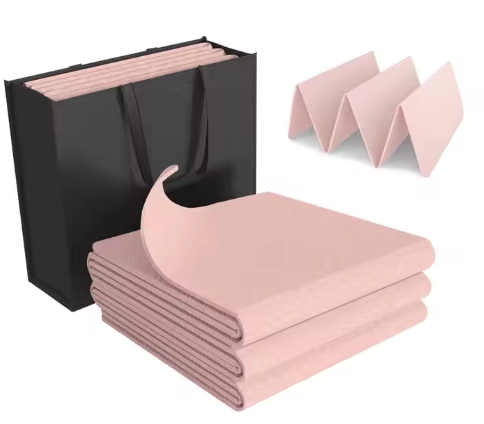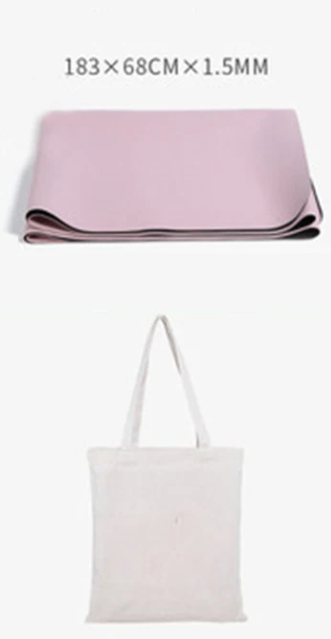I find that picking the perfect travel yoga mat can be a bit of a puzzle. I mean, have you ever tried to wrestle a bulky mat into a suitcase that’s already bursting at the seams? I know I have! In my opinion, the secret is to choose one that’s light but still feels good underfoot. It also needs to be simple to pack away. Plus, I always recommend finding one that’s friendly to you and to our Earth. I’ve come across many clever options, and each one offers something different. But, from what I’ve seen, most people overlook one straightforward detail. And I believe this detail can make or break your yoga routine when you’re traveling…
Key Features I Look For in a Travel Yoga Mat
If you’re looking for a great travel yoga mat, I suggest you think about these key features. They will make your practice better while you’re away from home.

Lightweight and Compact Design
A good travel yoga mat, in my opinion, should weigh no more than 1.5 kg. This keeps it light enough to carry without adding much burden to your luggage. I always look for mats that are foldable or can roll up tightly. They should slip easily into a suitcase or backpack. A truly compact design helps me move through airports, train stations, or nature trails more smoothly. The less space it takes, the more space I have for other essentials.
Material Type
The material of a yoga mat plays a big role in both performance and sustainability. TPE (Thermoplastic Elastomer) is one of my favorites—it’s lightweight, durable, and eco-friendlier than traditional PVC. Natural rubber offers excellent grip and grounding, though it tends to be heavier. I also like suede-surfaced mats because they absorb sweat well, which is great in hot climates. If you care about your environmental impact, I recommend choosing biodegradable or recyclable materials—they’re better for the earth and still offer great quality.
Thickness and Cushioning
When it comes to travel mats, I find a thickness of 1–3 mm strikes the right balance. A 1 mm mat is ultra-portable and fits easily into small bags, but offers only light cushioning. A 3 mm mat gives more comfort for joints, especially during long sessions, though it’s slightly bulkier. I always decide based on my travel plans—if I’m staying in hotels with carpeted floors, I go thinner. If I’ll be practicing on hard outdoor surfaces, a bit more cushion is worth it.
Grip and Surface Texture
Grip is non-negotiable for me, especially when I’m practicing in humid or outdoor settings. I prefer mats with a textured surface that provide traction no matter if my hands are wet or dry. A good grip helps me stay stable in downward dog or during fast-paced vinyasa flows. Some surfaces mimic natural textures like wave or leaf patterns, and I find these not only functional but aesthetically pleasing too.

Durability and Maintenance
Travel often puts mats through tough conditions—sand, dirt, sweat, even saltwater. That’s why I choose mats that are made to endure frequent use and rough surfaces. Durability is key when you don’t have the luxury of carrying spares. I also recommend mats that are easy to clean, ideally with just a wipe or a rinse. After a beach session or a mountain hike, it’s a relief to have a mat that stays hygienic and fresh for the next use.
Expert Opinion:
“I’ve taught yoga retreats globally for 15 years. In my experience, many travelers miss a key secret about their yoga mats. It’s not just the mat’s weight or thickness. The most important thing is its resilience – how well it bounces back. I always tell my students to check how their mat returns to shape after being pressed down. If you frequently fold a mat in your luggage, cheaper ones can get lasting creases. These creases can make your poses unstable. So, I recommend the ‘overnight fold test’ before you buy: Fold a mat you’re considering, leave it overnight, and then see if it flattens out completely. This simple check has saved numerous students from unsteady warrior poses and shaky tree poses during their travels.“
———— Sarah Mitchell , Certified Yoga Alliance E-RYT 500, International Retreat Leader and Author of “Mindful Journeys: Yoga Around the World”
Best Types of Yoga Mats for Travel
If you’re searching for a great yoga mat for your travels, I find that certain types are excellent. Their design, material, and how useful they are make them stand out. I recommend checking out these options below.
Lightweight and Compact Mats
These mats weigh under 1.5 kg. I like that they are designed for portability. You can fold or roll them without fuss. From my experience, they fit well in luggage and don’t take up much space. I recommend them for efficient travel; you can maintain your practice wherever you are.
Ultra-Thin Rollable Mats
You can roll ultra-thin mats into a small shape or lay them flat. Their thickness is about 1-3 mm, which I think makes them great for travel. I believe they are perfect for short yoga sessions. You can also use them over hotel carpets. These mats provide convenience, and I find their quality is still good.
Hybrid Travel Mats (Towel + Mat)
I notice hybrid mats often have a soft suede or microfiber top. This makes them quite suitable for hot yoga. I find it very practical that they serve two purposes. You can use them as a yoga mat and also as a beach towel or workout pad. I think this flexibility is wonderful for travelers. It helps you pack lighter while still having a useful item for different needs.
My Top Travel Yoga Mat Recommendations
If you’re looking for a great travel yoga mat, I suggest checking out these options. From my experience, they are easy to carry and work very well for practice on the go.
FDM Lightweight Travel Mat(manufacturer)
Weight: 1 kg
Folded Dimensions: 37 cm x 30 cm
Standout Features: I like that this mat lets air flow and is made from TPE material, which is kind to the planet. The surface helps you stay put, so you won’t slip. This is great even if your yoga session gets warm.
Manduka Eko Superlite Travel Yoga Mat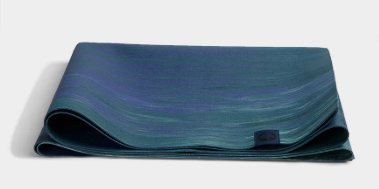
Weight: 1 kg
Folded Dimensions: 66 cm x 10 cm
Standout Features: This mat is made from natural rubber, so it can break down naturally. I find it has a great grip and good padding. This means your joints will feel comfortable, and it’s small enough for travel.
Gaiam Foldable Yoga Mat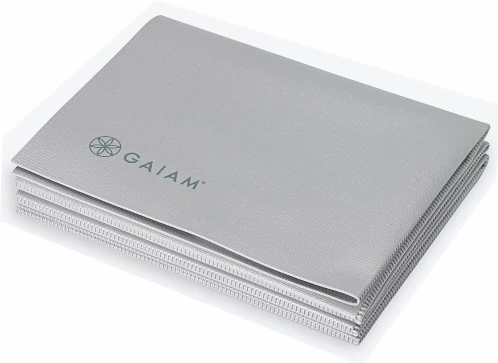
Weight: 1.5 kg
Folded Dimensions: 61 cm x 15 cm
Standout Features: You can roll or fold this mat without trouble. I think the textured surface is good because it stops you from slipping. You can use it on many surfaces, like in hotel rooms or outside.
Jade Yoga travel Mat
Weight: 1.5 kg
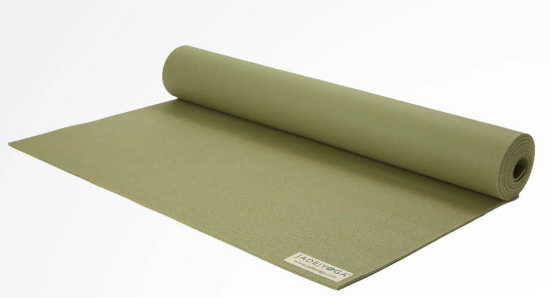
Folded Dimensions: 66 cm x 10 cm
Standout Features: This mat is made from natural rubber, and I’ve heard it has a really strong grip. It’s great for taking on trips. Plus, making it from natural materials Cares for the environment.
Liforme Yoga Mat
Weight: 1.3 kg

Folded Dimensions: 66 cm x 16 cm
Standout Features: I notice this mat has an alignment guide. It also gives you a great grip and lasts a long time. I recommend it for yogis who want to practice well even when they are away from home.
From my perspective, these mats give you comfort. They also help you keep up with your yoga practice without any problems, wherever you go on your travels.
Travel Tips for Yogis
Maintaining your yoga practice while traveling doesn’t have to be difficult—especially if you pack smart and plan for flexibility. The first step is knowing how to pack your mat properly. If you’re using a foldable mat, avoid folding it along the same lines each time to prevent permanent creases. Rotate the folds or loosely roll it when possible. For thin rollable mats, use a soft strap or band to keep it secure without tightly compressing the material, which can cause deformation.
Accessories to Pack:
-
Compact Mat Bag – Protects your mat from dirt, moisture, and scuffs during transit.
-
Mini Cleaning Spray – A small spray bottle (under 100ml) filled with mat-safe cleaner keeps your surface fresh, especially after outdoor use.
-
Yoga Strap – Doubles as a carrying solution and a stretching aid. FDM offers eco-friendly cotton straps that match your mat.
🏨 Where to Practice on the Road:
Adapt your practice to your environment. In hotel rooms, where floor space is often tight, focus on standing flows, seated stretches, or core work. A shorter flow using only one half of the mat can be just as effective. In outdoor spaces like parks, decks, or even airport lounges, scout for a clean, flat surface with some privacy if needed. Don’t be afraid to get creative—yoga is about presence, not perfection.
Staying Comfortable While Traveling
I always make comfort a priority for my yoga practice. Based on my experience, I look for mats that offer a good balance. They need cushioning and portability. This ensures I can maintain my practice easily when I travel.
summary
Based on my experience with many yoga mats during travels, I’ve learned a key lesson. Finding the ideal travel mat isn’t about a checklist of features. It’s about discovering a mat that supports your yoga practice, no matter where you are. I suggest that the best travel yoga mat is one you feel motivated to use. It should make you want to unroll it, take a full breath, and find your inner calm. This holds true in a busy airport or on a peaceful beach at dawn.

